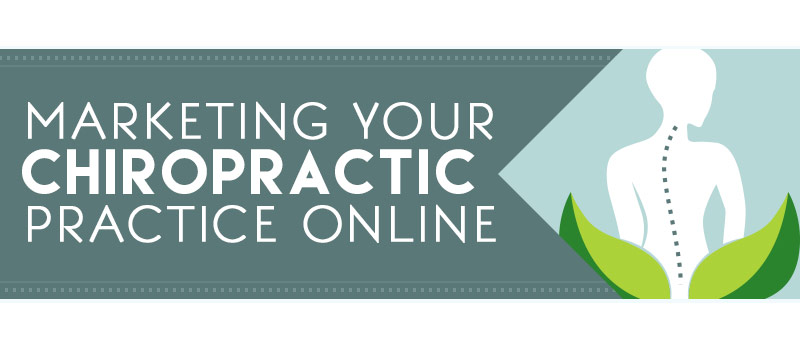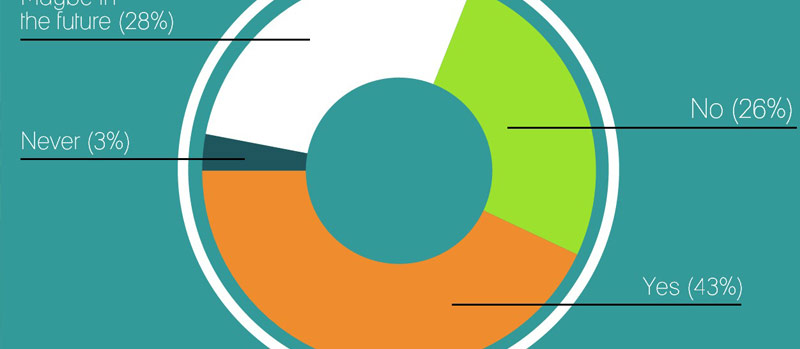email marketing getting started
Saturday, September 29, 2018
4 Ways to Grow Your Business at Trade Shows
Many businesses view a visit to a trade show as an opportunity to take a little time out from their hectic schedule, a way to show off their latest product or scope out the competition. Whilst all of those are perfectly acceptable ways to spend your time at a show, there are ways to grow your business at the same time.
Youtobe
Marketing For Accountants Take Your Firm to the Next Level
Invest Strategically in Your Inbound Marketing and Grow Your Accounting Firm
Businesses that want to succeed in the digital age need to develop a strong online presence and dynamic digital marketing strategies. This rule applies to many industries, including accounting.
Friday, September 28, 2018
How to apply colour psychology to web design [Infographic]
(And build up a killer website that gets the user experience to be something special)
Tuesday, September 25, 2018
My New SEO Tool: Ubersuggest 2.0
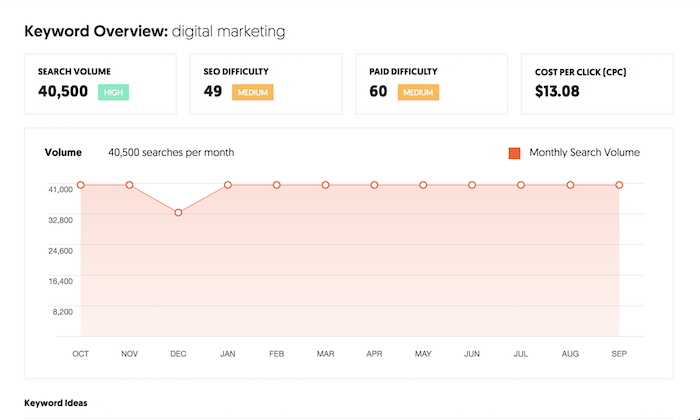
I promised you months back that I was going to release a newer, better version of Ubersuggest for free.
And can you guess what?
I just released it! 🙂
Before I go into the features of the new Ubersuggest and how it works, I just want to tell you that not all of the features have been released yet.
For the first release, I focused on keyword research.
So let’s dive into the new Ubersuggest.
Keyword Overview
The keyword research is broken down into 3 main sections: overview, keyword ideas, and SERP analysis.
The overview looks like this:
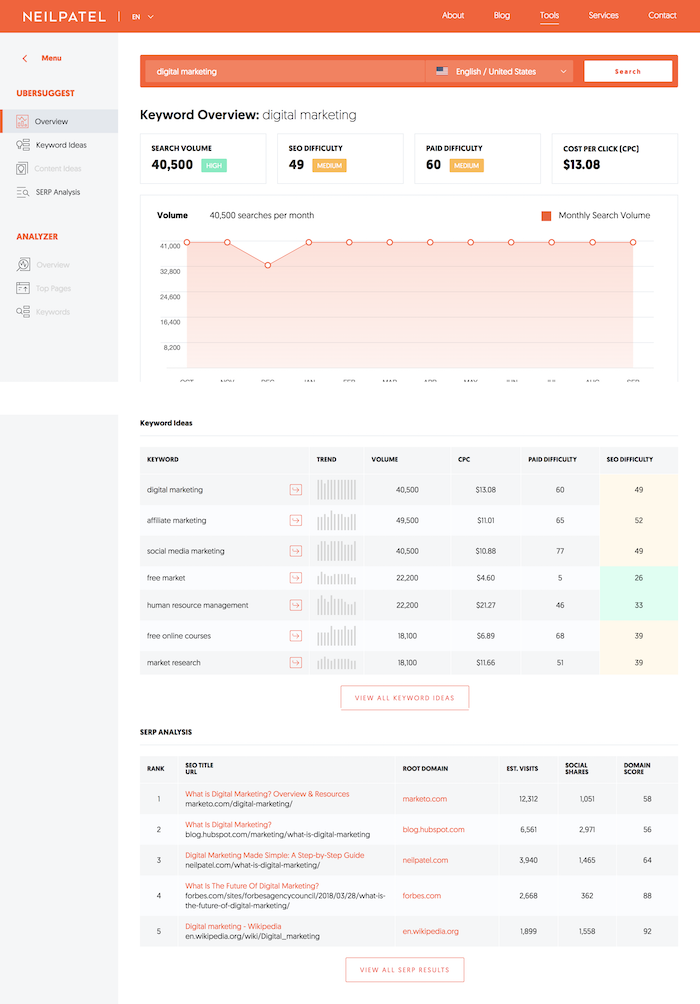
The first section is a graph that breaks down the search volume over time.
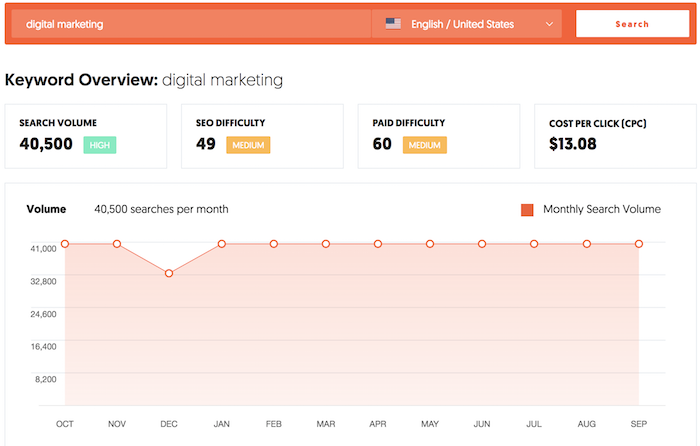
You can see the search volume for any keyword in any country and language over the course of the last 12 months.
The graph will show you if the keyword is gaining or declining in popularity or if it has seasonality.
In addition to that, it breaks down the cost per click, the SEO difficulty, and the paid difficulty.
The difficulty scores are from 1 to 100. The higher the number the harder it will be to compete for that keyword. And the lower the number the easier it is to compete.
Keyword Ideas
The second part of the keyword research is the ideas section.
This is the section that is most similar to the prior Ubersuggest but with a few more features.
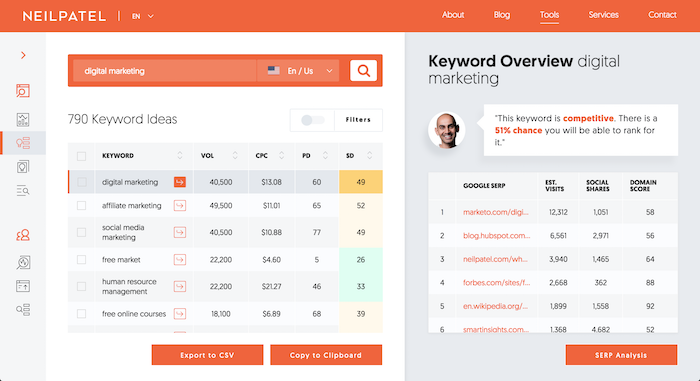
You’ll see a list of keyword ideas.
The keywords are pulled using both Google Suggest and AdWords recommendations. This way you can get a comprehensive list of potential keywords you may want to rank for.
And similar to the overview section, you’ll also be able to see volume data for each keyword as well as cost per click (CPC), paid difficulty (PD), and SEO difficulty (SD) data.
Now on the right side of the keyword ideas report you’ll see all of the sites that rank in the top 100 for that term.
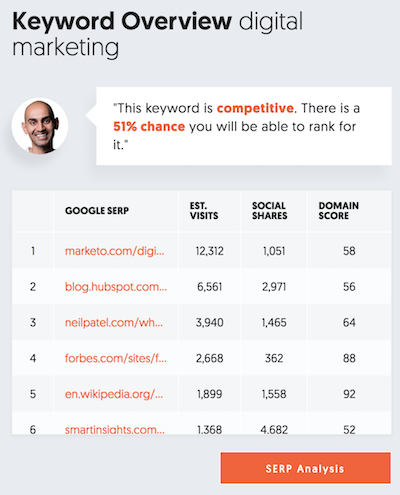
This is my favorite part of the keyword ideas report because you can easily see the estimated visit count based on rankings.
This metric looks at whether a keyword has seasonality and if there are any rich snippets or paid listings for the term.
In addition to showing you the estimated visits based on rank, you’ll also see how many social shares each URL has and its domain score.
Domain score is a metric between 1 and 100. The higher the number, the more authoritative a domain is and the harder it will be to beat that site.
As for the social shares, this will tell you how much people loved that particular web page. If more people are sharing it, they must have really enjoyed it.
The last feature in the keywords idea report (other than the exporting to CSV feature which doesn’t need much of an explanation) is the filtering.

This is where you can filter the keyword results based on any data point you want. From limiting the results to just Google Suggest or AdWords or by filtering keywords based on their popularity and competition.
If there are also too many results like the screenshot above, you can exclude or include certain terms or phrases. This will help you filter the results even faster.
And if you want to focus on long tail terms, just “uncheck” the “Google Ads” option and you will see all of the long tail terms.
SERP Analysis
The last section, SERP analysis, shows you a simple view of the top 100 sites that rank for any given term.

I know many of you are doing keyword research in different languages and regions and you’ll be able to do that with all of the reports, including the SERP analysis.
Eventually, I’ll showcase rich snippets and paid advertising data in this report.
We are already taking those two things into account when we run our calculations on estimated visits.
And of course, you’ll also see social share data and domain score.
So, what’s next?
I wish I was able to release everything at once, but development is never easy or fast. I have an amazing team… but good things just take time.
A few of the features I want to release over the next few months include a traffic analyzer report, which shows how much traffic a domain receives from Google.
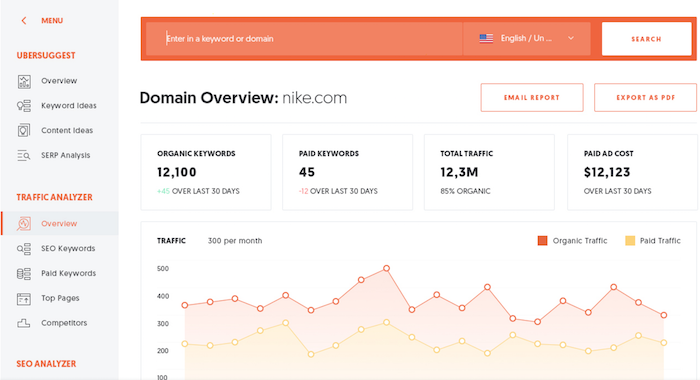
Another feature I will release will be a report that showcases top pages for any given website and the search terms that each of those pages rank for.
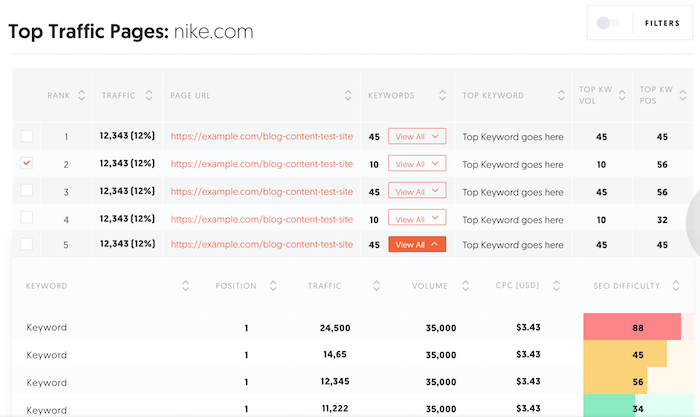
Once I release the traffic analyzer report, the team will be focusing on the content ideas report.
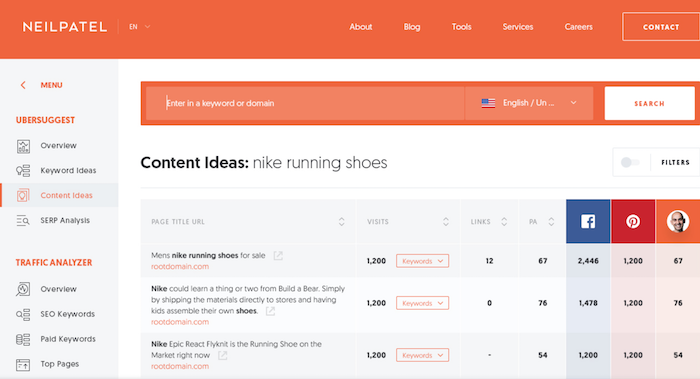
The content ideas will be part of the keyword research section.
When you research any keywords, you’ll be able to see the most popular articles on that subject based on search traffic and social shares (similar to Buzzsumo).
Conclusion
What do you think about the new Ubersuggest? If you haven’t used it, go check it out.
And if you find any bugs, please email them to support@neilpatel.com so my team and I can work on fixing them.
Like I mentioned earlier, this is a work in progress and other amazing features are already being worked on for future release. A lot of these ideas come from you guys so, please, the more feedback the better.
So, what do you think about the new Ubersuggest?
Wednesday, September 19, 2018
Breaking Down the Discovery Phase for a Digital Marketing Strategy
email marketing effectiveness statistics
The discovery phase is a collaborative research and analysis process. As a team, we work to uncover your challenges, goals, and needs from different expert perspectives.
Tuesday, September 18, 2018
The Secret Behind My 1,866,913 Monthly Search Visitors (It’s Not What You Think)
email marketing high traffic academy

How many visitors do you think NeilPatel.com generates each month?
Maybe a million… maybe 2 million?
I bet you’re going to guess 1,866,913.
If that’s what you guessed, you are wrong. This blog actually generated 2,530,346 visitors. 1,866,913 is the number that came from search engines.
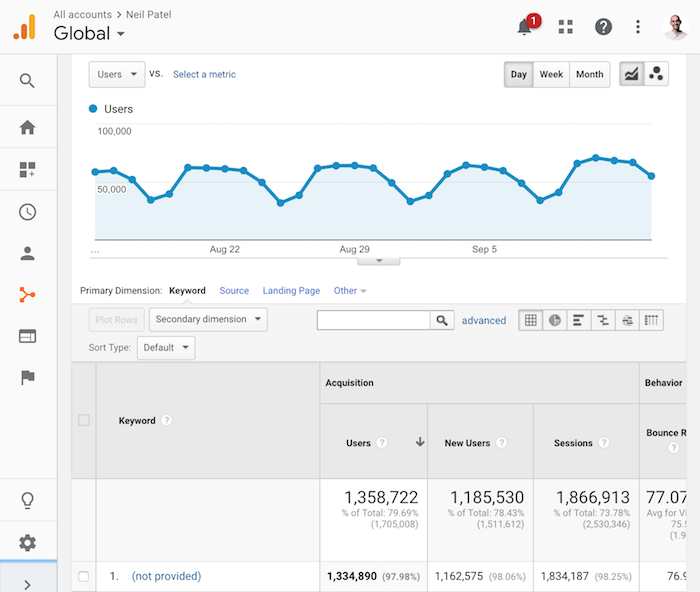
So, what’s the secret to my ever-growing Google traffic?
Sure, I have optimized my on-page SEO, I’ve built links, written tons of blog post… I’ve done all of the stuff that most of my competition has done. But doing the same stuff as your competition isn’t enough.
My secret sauce is that I optimize for user signals.
Last week, I broke down some of the user signals Google looks at, as well as providing benchmarks to aim for if you don’t want to be penalized by Google.
If you aren’t familiar with user signals, check the article I linked to above.
So, how do you optimize for user signals?
Well, I know everyone has different types of websites, so I thought I would share the process I use to optimize NeilPatel.com.
Are you showing people what they want?
Google Analytics is an amazing tool. I’m so addicted to it that I log in at least 3 or 4 times a day. Heck, I even log in on weekends.
But here’s the thing, it only tells you half the story. It gives you numbers, but it doesn’t help you visualize what people are doing and what they aren’t.
For example, here is what my main blog page looked like according to Crazy Egg:
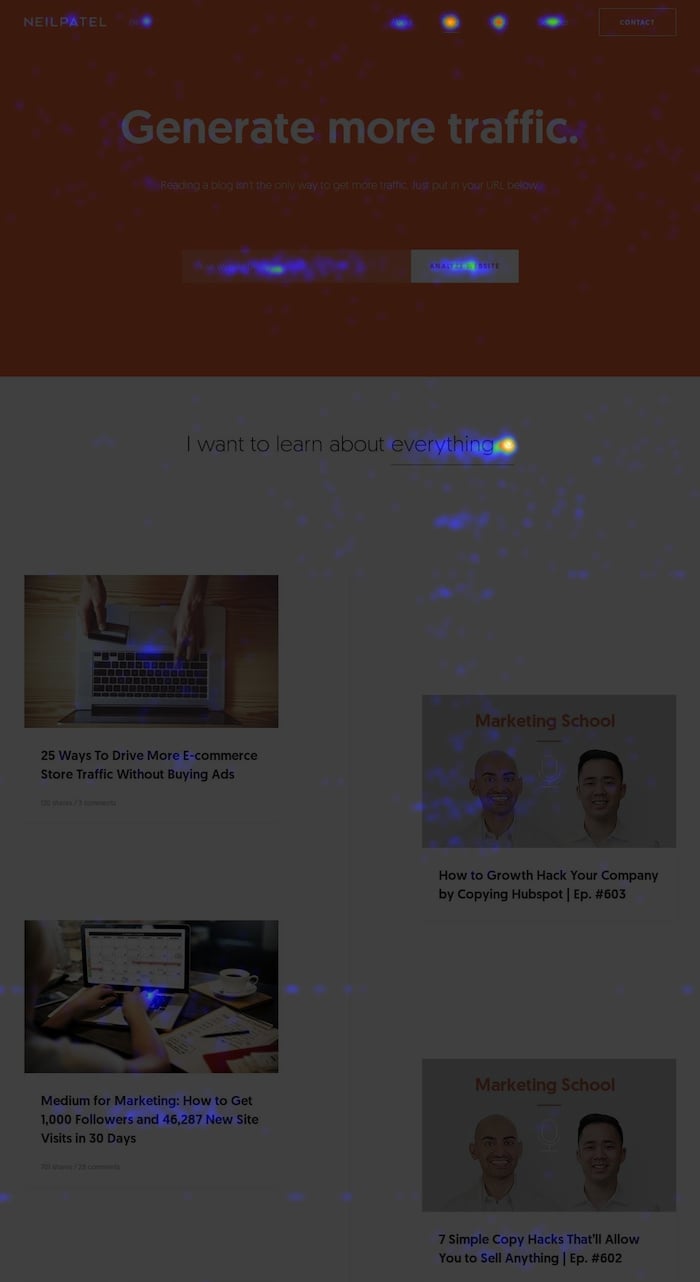
What’s wrong with the image?
Everyone is going to the blog to learn more about marketing. Above the fold, I have a box that showcases an SEO Analyzer. But there is one big issue: it’s barely clicked compared to the drop-down that lets you filter the blog content.
The SEO Analyzer had 128 clicks versus 359 clicks to the content filtering option.
Because you didn’t care for it as much, I removed it from the main blog page. And now when you head to the blog page you can see the filtering options above the fold.
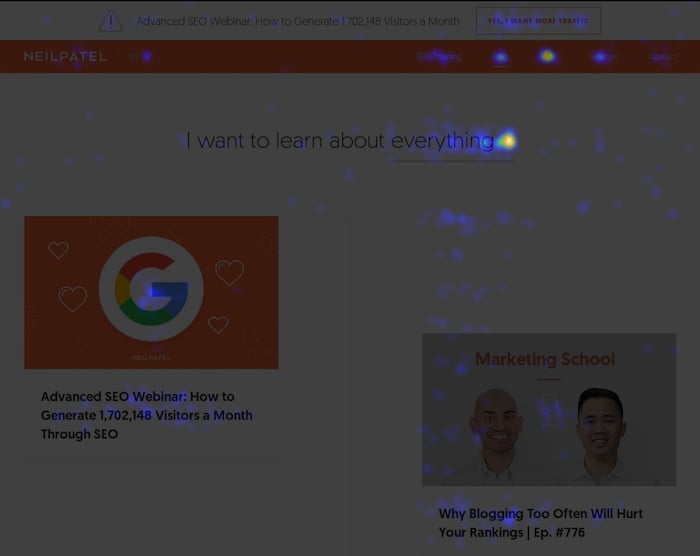
I am looking to see what you click on and what you don’t. Simple as that.
If I keep showing you something you aren’t clicking on, I am wasting the opportunity to present you with something you do want to see. Which means I either need to adjust it or delete it.
Now, let me show you my current homepage:

What’s wrong?
Go ahead, take a guess…
Well, looking at the image you’ll notice there are tons of hot spots in the footer. That’s where the navigation is. With there being all of the clicks on the navigation, I should consider adding a navigation menu bar in the header.
Are you getting the hang of how to make your website more user-friendly? Well, let’s try another one.
Here’s an element in the sidebar of my blog posts:
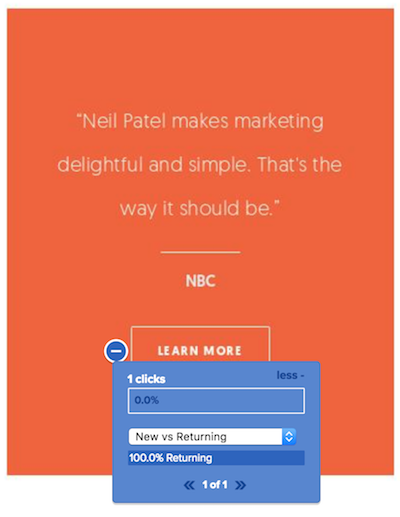
That element only has 1 click. That’s terrible considering that the blog post generated 10,016 visits. And to top it off, that click came from a repeat visitor.
My goal is to convert more first-time visitors into leads, which makes up the majority of my visitors, but they are the lowest percentage of my leads.
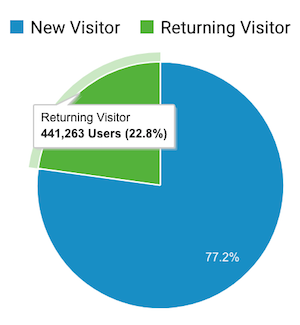
So, what did I do? I deleted that element and you no longer see it in my sidebar.
Are you optimizing for mobile?
Let’s face it, more people are visiting your site using mobile devices than laptops or traditional computers.
If that’s not the case, it is just a matter of time.
So, have you optimized your site for mobile? And no, I’m not just talking about having a responsive design because everyone is doing that these days.

If you look at the image above, you’ll notice that I removed the image of myself and a few other elements. This helps make the loading experience faster and it helps focus people’s attention on the most important elements.
Similar to the desktop version, my mobile homepage has a 24% conversion rate. When my mobile version included a picture of me above the fold, my conversion rate dropped to 17%… hence there is no picture of me. 😉
Now, I want you to look at the mobile version of my main blog page and compare it to my homepage.

Do you see an issue? The blog page generates a lot of clicks on the 3 bars at the top… that’s my navigation menu. My developer accidentally removed that from the mobile homepage, hence the contact button in the footer of the homepage gets too many clicks.
Hopefully, that gets fixed in the next day or two as that could be negatively impacting my mobile rankings.
On top of optimizing the mobile experience, you need to ensure your website loads fast. It doesn’t matter if people are using LTE or 4G, sometimes people have terrible reception. And when they do, your website will load slow.
By optimizing it for speed, you’ll reduce the number of people who just bounce away from your site.
If you want a faster load time, follow this.
And don’t just optimize your site for speed once and forget about it. As you make changes to your site, your pagespeed score will drop, which means you’ll have to continually do it.
For example, you’ll notice I have been making a lot of change to NeilPatel.com (at least that is what the heatmaps above show). As I am making those changes, sometimes it affects my pagespeed score negatively. That means I have to go back and optimize my load time again.
A second in load time delay on average will cost you 6.8% of your revenue.
Are you focusing on helping all of your users?
Not every person who visits your website is the same.
For example, a small percentage of the people who visit NeilPatel.com work at large corporations that are publicly traded and are worth billions of dollars.
And a much larger percentage of my visitors own small and medium-sized businesses. These people are trying to figure out how to grow their traffic and revenue without spending an arm and a leg.
And the largest percentage of my visitors don’t have a website and they are trying to figure out how to get started for free.
In a nutshell, I have three groups of people who visit my website. The first group tends to turn into consulting leads for my agency, but they make up the smallest portion of my traffic.
One could say that I should only focus on helping them and ignore everyone else. But I can’t do that for a few reasons…
- I started off with having practically no money and people helped me out when I couldn’t afford to pay them. I love paying it forward and helping people who can’t afford my services because I have been there, and I know what it’s like.
- If I only focused on the large companies, who would link to my website and promote my content? You can bet that Microsoft isn’t going to link to me on a regular basis. If you want to generate social shares and backlinks you have to focus on the masses.
- Little is the new big… if you can please the masses, they will make noise and the big players will eventually hear about you. So, don’t just treat people with deep pockets kindly, treat everyone the same and truly care about your visitors.
Once you figure out the types of people coming to your website (and if you are unsure just survey them), go above and beyond to help them out. Create different experiences for each group.
On NeilPatel.com, I’ve learned that people who work at large corporations are busy and they want to listen to marketing advice on the run. For that reason, I have the Marketing School podcast.
And a lot of beginners wanted me to break down my steps over video, so they can more easily replicate my tactics. For that reason, I create new videos 3 times per week giving marketing and business advice.
Many of you want to attend the conferences that I speak at, but can’t afford to buy a ticket. For those people, I create weekly webinars that are similar to the speeches I give at conferences.
And best of all, I know the majority of you find it hard to follow along with all of these tips as it can be overwhelming. So, I created Ubersuggest to help you out.
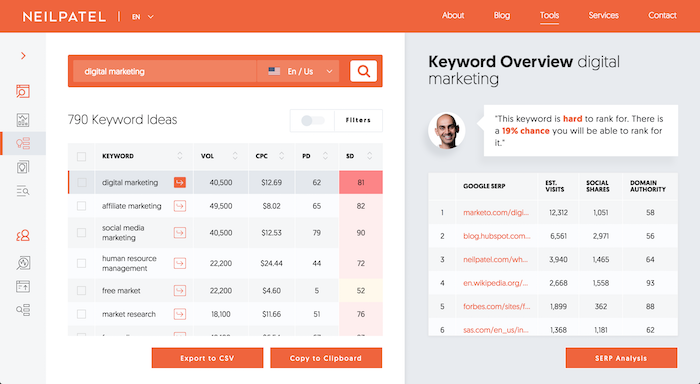
In other words, I try to go above and beyond for all of my visitors.
Yes, it is a lot of work, but if you want to dominate an industry it won’t happen overnight. Expect to put in a lot of time and energy.
Are you taking feedback from people?
You are going to get feedback. Whether it is in the form of email or comments, people will give you feedback.
It’s up to you if you want to listen… but if a lot of people are telling you the same thing you should consider it.
For example, I get a ton of comments on YouTube from people asking me to create videos in Hindi.
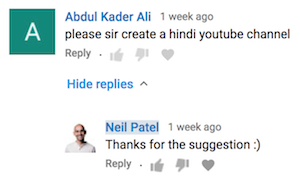
And…
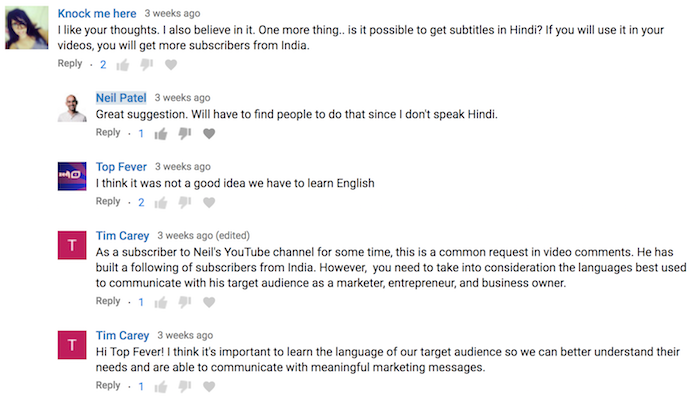
Now, I am not only working on adding Hindi subtitles to my videos, but I am also working on translating my blog content to Hindi.
![]()
I’m not doing these to make more money… I’m not doing this to become popular… I’m just trying to do this to help out more people.
It’s the same reason why I have Spanish, Portuguese, and German versions of this website. I had enough requests where I pulled the trigger even though I am not focusing on generating income in those areas.
But here is the thing that most people don’t tell you about business. If you just focus on helping people and solving their problems, you’ll notice that your income will go up over time.
Businesses make money not because their goal is to make money… they make money because they are solving a problem and helping people out.
Another piece of feedback I have been getting recently is that my blog is too hard to read on mobile devices.

For that reason, I’ve assigned a task to one of my developers to fix this.

Conclusion
Traffic generation is a business. It’s not a hobby. It’s competitive, and it’s difficult to see short-term gains.
If you want to rank at the top of Google, you can’t treat your website as a hobby. You have to treat it like a business.
And similar to any business, you won’t succeed unless you pay attention to the needs of your customers. That means you have to listen to them. Figure out what they want and provide it.
That’s what Google is trying to do. They are trying to rank sites that people love at the top of their search engine. If you want to be one of those sites, then start paying attention to your visitors.
Show them what they want and go above and beyond so that they will fall in love with your website instead of your competition.
If you aren’t sure if you are making the right changes, monitor your brand queries. The more people that are searching for your brand terms on Google is a big leading indicator that people are happy with your website.
Just look at NeilPatel.com, I get over 40,000 visitors a month from people Googling variations of my name:
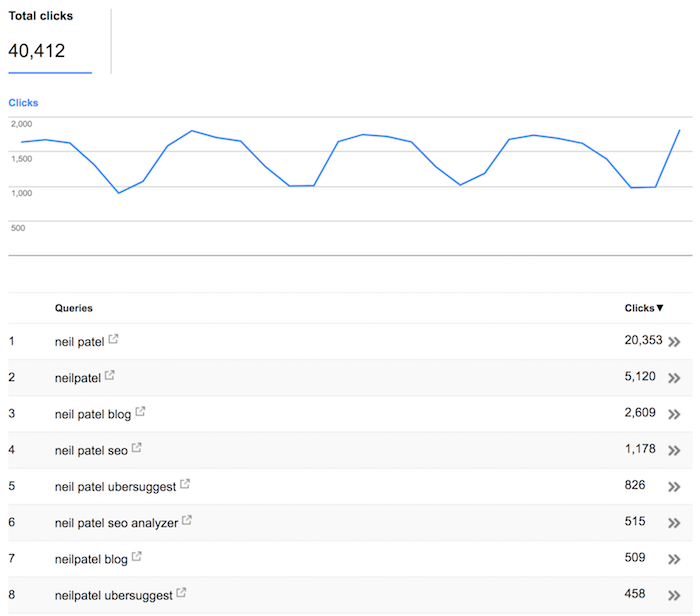
And I generate over 70,000 visits a month just from people searching for my free tool, Ubersuggest.
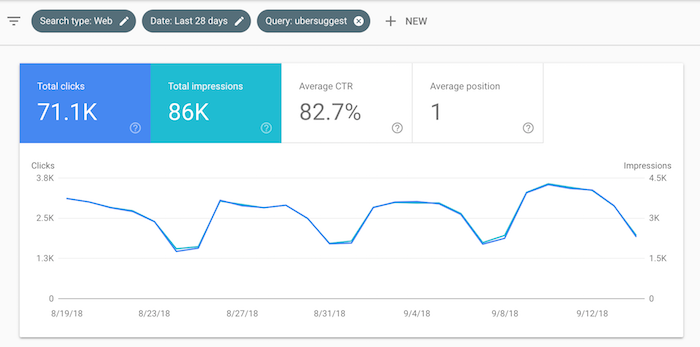
That’s how I’m continually able to make my traffic grow. Yes, I do pay attention to what Google loves, but more importantly, I pay attention to your needs and wants.
Are you going to start optimizing your website for user signals?
Youtobe


